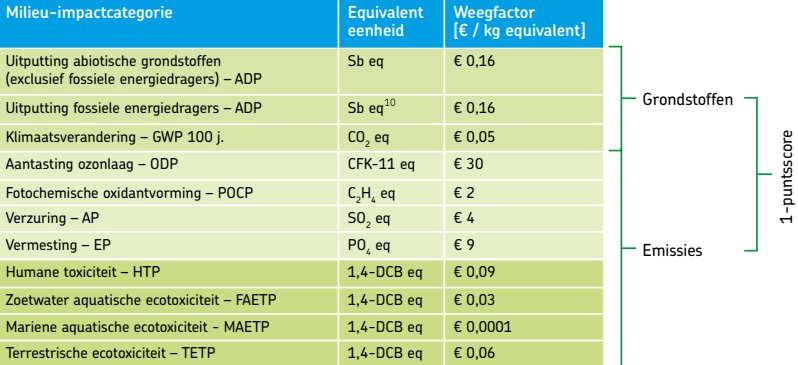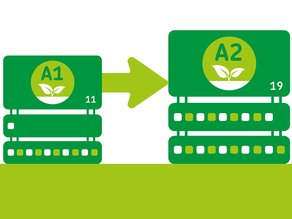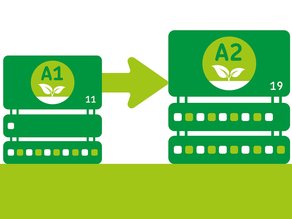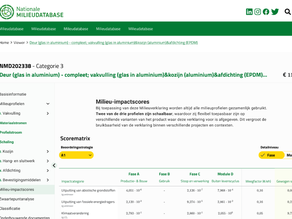Weighting set and shadow costs
To arrive at an environmental performance of buildings in the form of a 1-point score like the EPB and the ECI, emissions from products over the life cycle are grouped into a set of different environmental impact categories. These values are then expressed in a shadow price, where each category is assigned its own weight and the environmental impact categories add up to the ECI and EPB. This weighting follows from the current weighting set.
From 11 to 19 environmental impact categories
To calculate the environmental performance of buildings, the environmental impact categories designated by the government are considered. A life cycle analysis (LCA) results in a report that shows which raw materials are consumed and which emissions are released during the life cycle of (building) products. These emissions are classified into different environmental impact categories, so that complex data is expressed in accessible figures with appropriate units.
Stichting NMD collects environmental data based on a set of environmental impact categories that follows the assessment method. Underlying this is the European standard EN15804. Until 2019, the set of impact categories consisted of 11 impact categories, referred to as the 'A1 set' (following the EN15804+A1 standard). With the revision of the standard (EN 15804+A2), a new set has been designated, the A2 set.
From 1 January 2021, it became mandatory to provide two sets of environmental data in the NMD, one based on EN 15804+A1 (set 1) and one based on EN 15804+A2 (set 2).
According to the current schedule of the Ministry of Housing and Spatial Planning (VRO) and subject to parliamentary approval, EPB calculations will be based on the new A2 set from 1 July 2025. This set (EN 15804+A2) consists of 19 environmental impact categories.
The new set of environmental impact categories are based on current scientific methods embraced by the European Commission to determine the environmental performance of products and thus buildings.
Compared to the old set, the new set now includes sub-indicators and indicators have been added. The main change in this transition is the adjustment of the environmental impact categories of acidification, eutrophication, summer smog, human toxicity and ecotoxicity. The impact category 'climate change' has also been divided into three categories.
The new classification and expansion of categories has implications for the environmental profile of the building products and materials. Amending the environmental profile also changes the environmental performance of the building material or product, because the environmental performance is a numerical representation of the environmental profile.
Weighting set and shadow costs
To arrive at a 1-point score from the environmental impact categories scores to assess the environmental performance (EPB/ECI) of a structure, predetermined weighting factors are used to arrive at the shadow costs per environmental impact category (see Figure). These shadow costs allow one environmental impact category to relate to another, allowing a weighted 1-point score to be calculated. The weighting set determines which weighting factors are used. The government decides which weighting set to apply.

Frequently asked questions calculating with the A2 set
Subject to parliamentary approval, the planned transition date when the A2 set will be used in EPB calculations is 1 July 2025.
The A2 data of environmental declarations will be available in the validated calculation tools from 2 September 2024. This allows the market to gain experience with this new situation before the official start.
Until 1 July 2025, all official EPB calculations will continue to be based on the A1 set. Where possible, however, it is advisable to practise with the A2 set beforehand to become familiar with the new data.
The transition to the A2 set aims to provide a more complete and accurate assessment of the environmental impact of construction projects, in line with the latest scientific insights and European standards.



